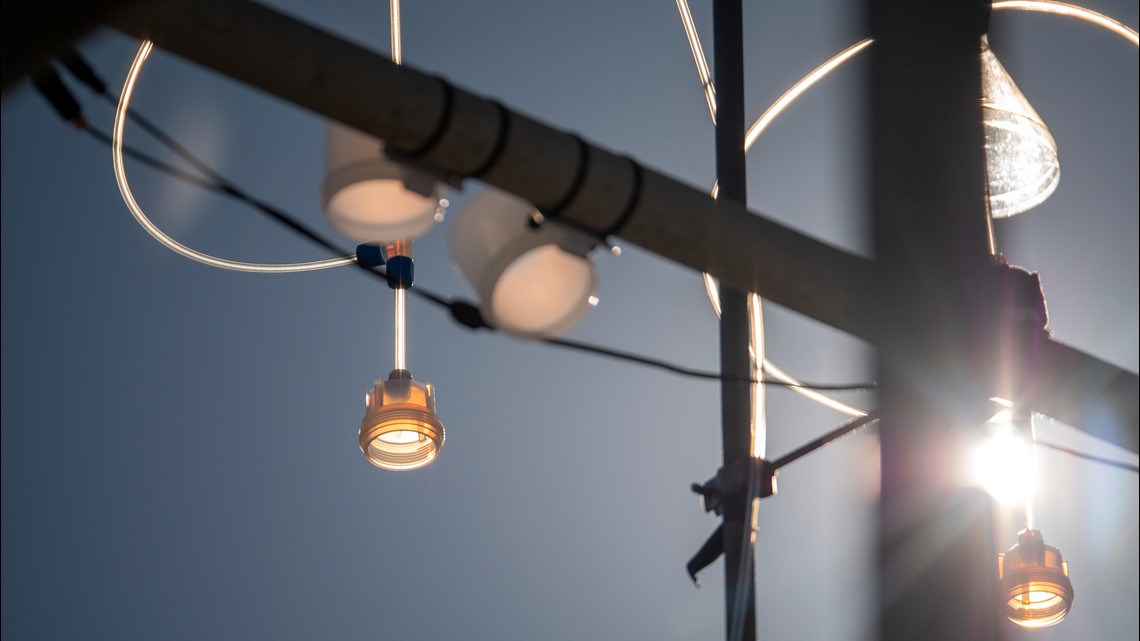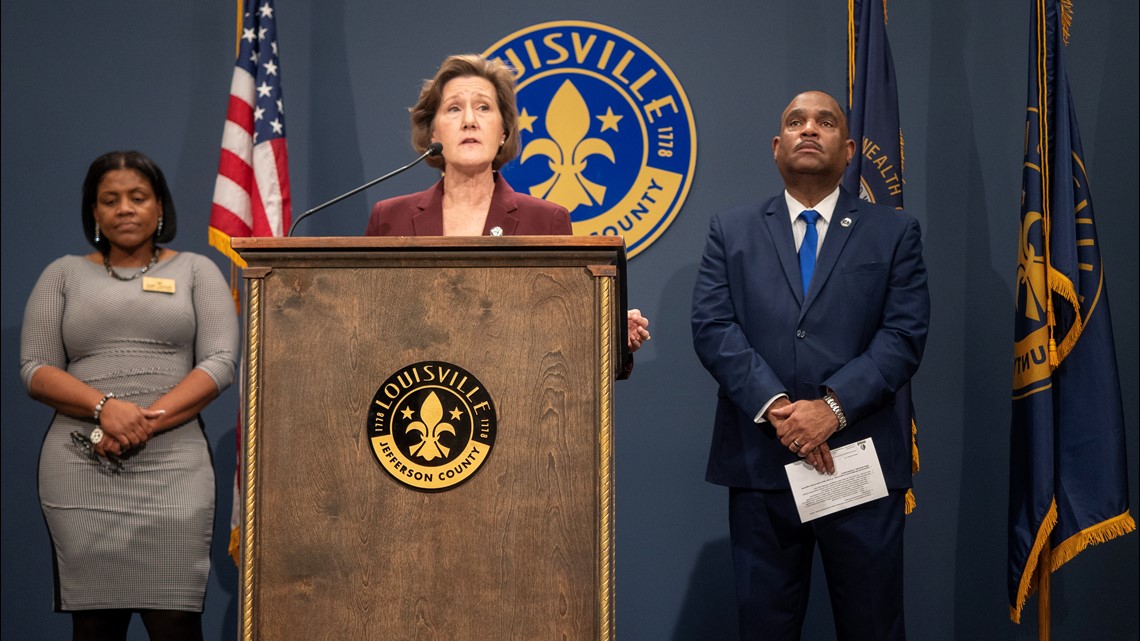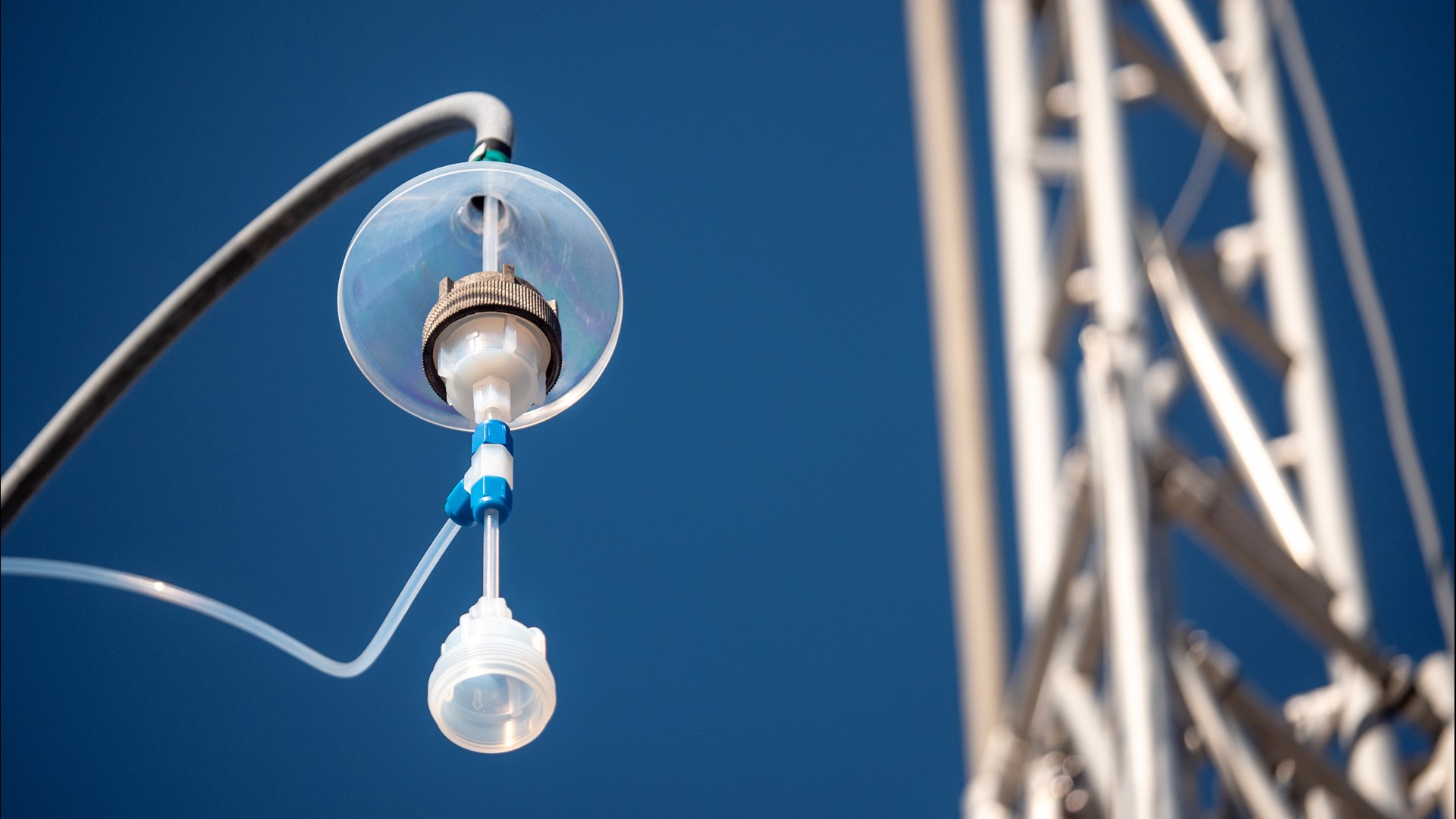LOUISVILLE, Ky. — If you're ever wondering, 'what's that smell' or 'what's that weird hazy cloud in the sky,' then the Air Pollution Control District can tell you what it is. They use air monitoring sites like the one on Cannons Lane to see what's in the air and how much. It all starts up top.


The air is pumped in through tubes above the monitoring station.
"The tube will go down into an instrument and depending on which pollutant that is, it's quantified by a different spectral signature," explained Tom Lobb, the air monitoring supervisor with the APCD.
That means lasers shoot through the transparent tubes that hold the air and use those light waves to determine which chemicals and how much of them are present in the air. It works like a barcode scanner you see in grocery store, providing updated totals every minute.
"Our pollutant that has troubled us the most has been Canadian wildfire intrusion. Which is mostly particulate matter that impacts us here in Louisville and it's not something we're used to seeing," Lobb said.
Even after the haze dissipated from those wildfires this summer, air monitors were still identifying small, dangerous particles. It's data they track every hour of every day that's made publicly available online.
The APCD also offers opportunities to calibrate consumer-grade air sensors with their more sophisticated equipment.
"I know what's in the air," Lobb said. "I take my kids out in it all the time. [I'm a] lifelong Louisville resident, and I'm glad to serve the people."


Service is expanding soon when the APCD begins testing for hydrogen sulfide. It's the chemical escaping Louisville's sewers when there's not enough rain. The equipment has already arrived, but they need to test it first before use with a control sample of the gas.
They expect to complete testing within the first two months of 2024.
Make it easy to keep up-to-date with more stories like this. Download the WHAS11 News app now. For Apple or Android users.
Have a news tip? Email assign@whas11.com, visit our Facebook page or Twitter feed.

